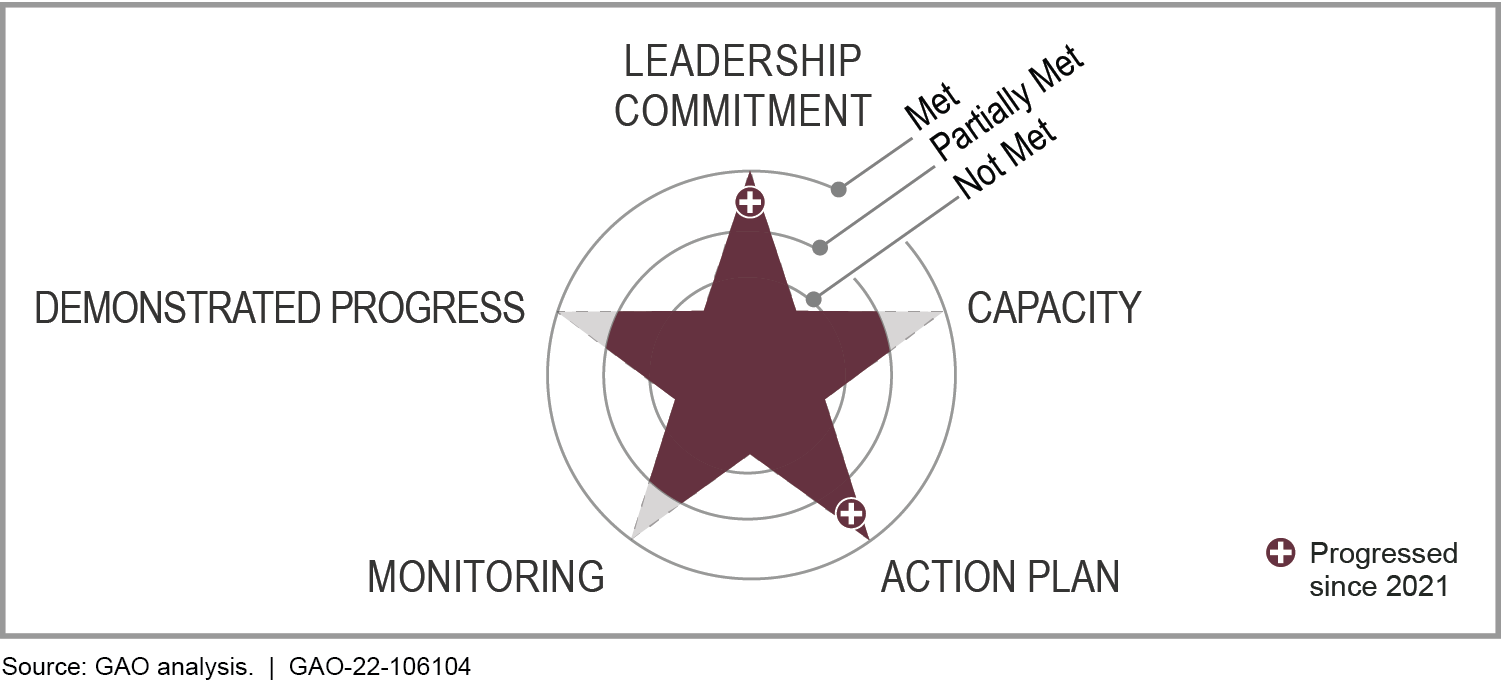High-Risk: Bureau of Indian Education Has Addressed Some Management Weaknesses, but Additional Work Is Needed on Others
Fast Facts
Federal management of programs that serve tribes and their members has been on our High Risk List since 2017—i.e., especially vulnerable to fraud, waste, abuse, and mismanagement, or in need of transformation.
Since then, the Bureau of Indian Education has been working to better oversee 183 schools that serve 46,000 American Indian students. For instance, BIE has addressed leadership commitment issues, and made plans—including one to help address facility safety hazards.
However, BIE still needs to address other key management issues. For example, it continues to face challenges hiring and retaining enough staff to support and oversee schools.

Highlights
What GAO Found
Since GAO last reported on the high-risk status of the Bureau of Indian Education's (BIE) administration of schools for American Indian students in March 2021, the agency has fully met two of the five criteria for removal from the High-Risk List. Specifically, BIE has fully met the criteria for leadership commitment and having an action plan. Senior leaders have demonstrated a strong commitment to addressing the issues GAO identified and have provided continued support to resolve these management weaknesses. In addition, BIE and other offices within the Department of the Interior (Interior) have developed action plans to address a range of management challenges including a September 2021 comprehensive, long-term capital asset plan to guide its school construction efforts and a January 2022 plan to build schools' capacity to ensure building safety, such as maintaining fire alarm and sprinkler systems.
Status of the Bureau of Indian Education’s Progress in Addressing High-Risk Management Weaknesses, as of June 2022

However, additional work is needed for BIE to fully address remaining management weaknesses before GAO can consider removing BIE's administration of schools from the High-Risk List. As with the 2021 high-risk rating, GAO continues to rate BIE's actions as partially meeting the remaining three high-risk criteria for capacity, monitoring and demonstrated progress. In terms of capacity, BIE continues to have an overall staff vacancy rate of about 33 percent. GAO maintains that high staff vacancy rates significantly inhibit BIE's ability to support and oversee schools. Monitoring has also been a struggle. For example, BIE has not fully implemented its program for risk-based monitoring of schools' use of federal education funds. In addition, BIE does not have a program for routinely monitoring and assessing technology assets at schools, which we found contributed to major delays in providing students with distance learning devices during pandemic-related school closures. Addressing these areas, including GAO's remaining 10 recommendations, will be central to demonstrating progress in BIE's management of schools.
Why GAO Did This Study
GAO's High-Risk List identifies government operations with vulnerabilities to fraud, waste, abuse, and mismanagement, or in need of transformation. GAO added the area Improving Federal Management of Programs that Serve Tribes and their Members to its February 2017 biennial update of high-risk areas. This area includes a component on BIE's administration of schools for American Indian students.
This testimony is based on GAO's March 2021 High-Risk Report and subsequent updates provided by BIE. This testimony provides examples of actions taken and progress made by BIE to address the five criteria GAO uses to determine whether to remove a high-risk designation. GAO also drew on findings from past reports and testimonies on BIE issues.
Recommendations
GAO has made 32 recommendations related to BIE's support and oversight of schools, and 10 of these have not been fully addressed. For GAO to remove this component from the High- Risk List, BIE needs to improve its capacity and monitoring and demonstrate progress in its administration of schools.
